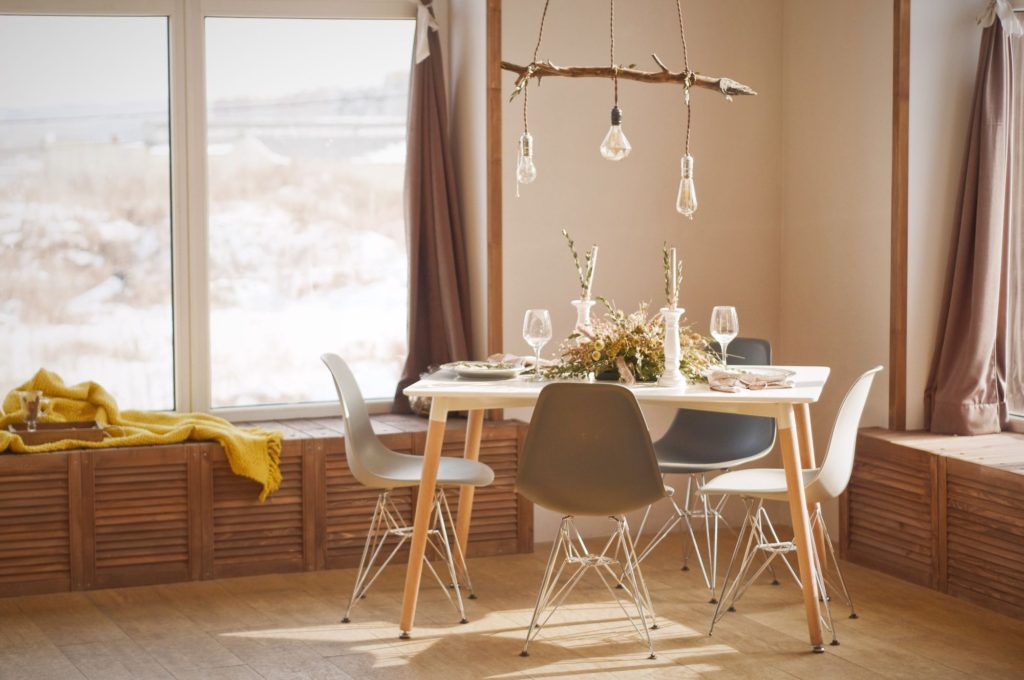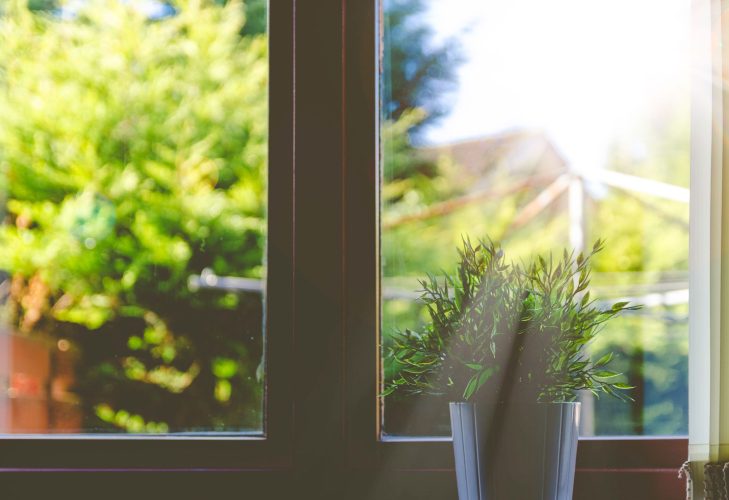As yoga practitioners, we spend time learning about and seeking peace. In the Yoga Sutras (1.2), we define our practice as Yogas Citta Vrtti Nirodha, a “decluttering of the mind so we may access places beyond our ego.” We spend time seeking sanctuary in yoga studios, temples, churches, libraries, and hiking trails (to name a few). We often find peaceful places outside our own homes. Why not create surroundings that encourage peace, creativity, and a sense of “decluttering” where we spend most of our time?
To be honest, I’m not an interior designer, nor do I particularly subscribe to design theories, largely because I haven’t studied them. Rather, I employ a methodology that incorporates my own feelings. It’s simple: I walk into a space and notice how it makes me feel. I am keenly aware of how furniture arrangements, placement of art and artifacts, colors, textures, and lighting all make me feel. It’s a total sensory experience, and I’ve learned to trust it. I’ve learned my senses are valuable input to my own peaceful living.

There are a few rules when using this methodology. Most importantly, this is about how your surroundings are making you (not someone else) feel. This is often the most difficult part of designing a peaceful home; you don’t trust yourself. How you feel cannot be disputed. You create your own beauty defined only by the feedback your senses deliver. For this reason, I am a huge advocate for displaying things you buy, rather than employing someone else to buy things for your home. When you purchase an item or choose to keep a gift or inherited item, it has passed your test, and likely makes you feel good.
The idea is to notice reactions to your surroundings, such as how the morning light warms the colors in the painting I see from the kitchen table, how it makes me relax while I sip coffee and begin to plan my day – or, conversely, how too many items lying on the kitchen counter distract me as my brain yearns to organize them more efficiently. It may seem relatively easy to identify how something makes you feel. The key is to take the information and do something about it. Trust your self-study, your svadhyaya. Notice your reactions, and, if they aren’t particularly peaceful, make a change. Believe that it’s possible to create peace in your own surroundings.
Be conscious of clutter
I join Marie Kondo in her theory that decluttering your personal belongings is achievable and an intelligent place to start. When I walk into an area that is cluttered and ask myself how I’m feeling, the answer is rarely great. And yes, this happens. My house is not a museum; it is a place where several things are accomplished and often at the same time. I’m not talking about decluttering to the point that nothing ever moves. I’m talking about the kind of clutter that accumulates over time, working hard to gain permanent residence and simultaneously disturbing your tranquility. Peaceful living requires a space that is void of permanent clutter. Do yourself a favor and start there.
Incorporate color
I hesitate to say “the single most important” thing, but I will when it comes to color. Science has already explored how color affects mood. If you haven’t already played with color in the place where you spend most of your time, I recommend it. This could come in the form of painting walls, or perhaps something less of a commitment, like adding bright art, fabric, or a plant. Think about adding splashes of color that make you feel good. If your favorite color is burgundy, have something burgundy in every room; when you enter the space, your sight will go to it, and a burst of satisfaction may enshroud you.

Budget wisely
Contrary to popular belief, it does not require a lot of money to create a peaceful home. Sure, there may be things that are beyond current financial reach, but a peaceful feeling in your home does not depend on those acquisitions. In fact, you likely already have items in your home that make you feel wonderful. After all, you are the one who decided it belonged with you in the first place, and, if you allowed it to survive the Marie Kondo sweep, chances are high that it impacts your soul in a good way. In my home, I have expensive art purchased from expensive travel that lives happily sitting next to something I picked up on a trail while hiking ten years ago (a tree branch with a soft soft curve that caught my eye). I have a rusty nail from a burned down bridge occupying front-and-center shelf real estate. Why? Because it makes me feel good. I also thoroughly enjoy the idea that when someone enters my space, it helps them understand who I am.
Incorporate outdoors
Another area I recommend paying attention to is outside your windows. I consider what I see out the windows as part of the room. If I look out and see garbage cans, or my dirty car, or a pile of yard clippings that are starting to solidify, I do not feel at peace. We all have varying abilities to remedy this situation. For example, if you live in a city and cannot control the rush-hour traffic bustling by, your options may be limited but are not none. You can hang a window covering or play some light music – or maybe you have a garden outside your window and you’ve noticed that the color yellow makes you happy. Well then, you need some sunflowers, or a lemon tree, or a yellow bird feeder. The point is to see the room in its entirety, which includes what is outside.

Start small
If creating peaceful living in your entire space seems like an overwhelming task, consider starting small. Perhaps this isn’t the time to overhaul the entire place. You have young children who need to spread out with their toys, and paint, and be able to play Twister – or, your parents have moved in with their meaningful collections that don’t represent you in the least. We often need to make room for others in our homes. In that case, I suggest you find smaller spaces to create your sanctuary. Consider those spots that you frequent more than others, like your bathroom or (heaven forbid) closet. Yes, even a beautiful closet can make you feel wonderful.
Our surroundings impact how we feel, particularly if we spend time learning to tune into what surrounds us. We can make relatively simple changes in our homes to create serenity by paying attention to how we feel and then taking the appropriate action. Trust your inner home designer to create your own peaceful space.
















